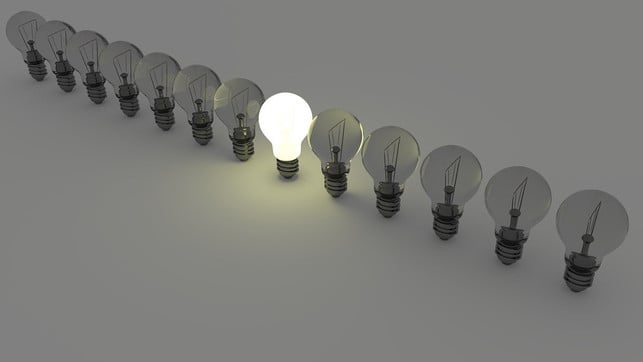
Stress can be divided into negative and positive stress: distress and eustress. We will explain to you how you can distinguish between the two types of stress.
Whether at work, while shopping, in your free time or in your relationships with family, friends and partners: In everyday life there are always situations that lead to stress. Different stress factors, also known as stressors, promote stress.
-
Mental stress factors: They depend on the individual situation and affect private and professional life. This includes situations in which you feel under time pressure and are overwhelmed – such as exam anxiety.
-
Social stress factors: This refers to all conflicts on an interpersonal level. This can be a breakup, but also unresolved problems that are bothering you or the feeling of being alone.
Two forms of stress: distress and eustress

(Photo: CC0 / Pixabay / ColiN00B)
Stressors can trigger negative stress in you. However, that is not necessarily the case. Because stress is perceived very subjectively and varies from person to person. Not every challenge you experience immediately results in a negative stress reaction.
- There are certainly tasks in your everyday life that you have to work hard for, but that you can handle well. They trigger positive reactions in you. The stress you feel makes you even more productive. This is called eustress.
- Other tasks that you find difficult can make you feel insecure. They trigger negative stress. This is called distress.
We will explain to you how you can distinguish between eustress and distress.
Eustress: meaning and how to recognize it

(Photo: CC0 / Pixabay / nastya_gepp)
The Greek prefix “eu” stands for “good”. So eustress is good stress. You don’t experience this stress as stressful because they are activities that you enjoy doing and do with a lot of dedication. Eustress can also trigger feelings of happiness, which you feel before a happy occasion such as a birth, marriage or a sports competition. This stress makes you more productive and has an invigorating effect.
You can recognize eustress by the following criteria:
- Eustress and relaxation alternate. This means you are not permanently tense.
- Eustress makes you happy, strong and optimistic.
- Eustress challenges you, but you can be sure that you can handle the situation.
- Eustress can activate other inner forces.
Distress: meaning and how you recognize it

(Photo: CC0 / Pixabay / EliasSch)
The Latin prefix “dys” means “bad”. Distress is bad, negative stress. It drains your strength and makes you dissatisfied. Typical factors that promote distress are:
- Feeling doubly burdened because of work and family.
-
Being afraid of your professional future.
- Always having to be available because of digitalization.
When distress lasts for a long time, it is very stressful due to its emotional, mental and physical consequences. This can lead to burnout.
You can expose distress using the following characteristics:
- When you are stressed, you feel constantly overloaded.
- Distress overwhelms you, makes you unable to act and helpless.
- Distress blocks you internally so that you can no longer view and solve problems objectively.
- While you are stressed, you no longer experience time to truly relax.
- Distress makes you irritable and exhausted over time.
Eustress and distress in balance

(Photo: CC0 / Pixabay / jarmoluk)
It is very difficult to draw a clear line between eustress and distress. Depending on your individual feelings, eustress can quickly become distress. Several factors can help you minimize the potential for distress and maximize the potential for eustress:
1. Reduce your negative stressors to minimize distress.
Every now and then, remind yourself of your stressors that cause distress. Think about which stressors you can reduce, avoid or even eliminate. For example, try to consciously limit social media, toxic relationships or tasks that are unpleasant for you. This way you don’t feel defenseless against your distress.
2. Use stress management methods to reduce distress.
Relaxation methods such as autogenic training or progressive muscle relaxation can help to relieve internal tension and thus distress. Daily relaxation helps you to be more stress-resistant in the long term.

(Photo: CC0 / Pixabay / zhivko)
3. Increase your positive stressors to maximize eustress.
Eustress can make us more productive. Make a list of tasks that you achieve with joy, motivation and little extra energy. These are tasks that you enjoy so much that you can completely forget about space and time. Try to consciously integrate and maximize these things into your everyday life.
4. In an emergency: Keep a clear head.
If you find yourself in a stressful situation, try to regulate your emotions. You can do this by doing a relaxation exercise or letting off steam while exercising. You can also talk to someone about your situation. Afterwards you will be able to reduce your stress with a cool head and distance.
Read more on Techzle\.com:
- Time management: tips and methods for less stress
- Reduce stress: 7 tips to slow down your life
- Take a break: Ideas for relaxing short and long breaks
Revised by Philipp Multhaupt
** marked with ** or orange underlined Links to sources of supply are partly partner links: If you buy here, you are actively supporting Techzle\.com, because we then receive a small part of the sales proceeds. More info.